Table of Contents
It doesn’t matter if you have an hour’s ride or a day’s cycling. Even with shorter distances, you may encounter unpleasant situations for which you need to prepare. All the more so when you go outside the city. There you certainly don’t want to deal with a popped inner tube, thirst or a sudden change in the weather. If you’re a pro, you probably already have a perfect grasp of what you need to always have with you. In case you’re just starting out with cycling, I’m sure you could use some advice on what to look out for and what not to underestimate.
7 important tips on how to prepare for a bike trip
Minimum amount of items and maximum usability. That’s how we might characterize the equipment of every proper cyclist. Apart from tools and inner tube replacement aids, however, you should not forget about optimal clothing, safety equipment and, of course, plenty of food and drink. In the following seven points, we will give you some advice on how to make the most of your ride, minimize the risks and be able to cope in the event of an emergency.
1. Take the basic tools with you
In case there’s a technical problem, you should have tools with you that you can solve it. Don’t worry, no one is asking you to carry eight screwdrivers, pliers and drag a compressor behind you. You can make do with a cycling multi-key, which contains several dimensions of a hex key, screwdrivers, or a nipple key wheel rim, a chain puller or tyre levers. It’s easily stored, so you don’t have to worry about it being too heavy or too big. You can fit it in the smallest bike box. In case you pop a tyre, break the chain or have a similar problem, you will be able to help yourself with the tools and continue on your way. [4-5]
While riding, you may also encounter a glitch that you will not be able to resolve on your own. If you carry the necessary tools, you will surely find a more experienced cyclist to help you. I’m sure the people in this community won’t leave you in the lurch.
2. Do not forget a spare inner tube
Popped tyres are among the most common problems faced by cyclists. If you ride regularly, this problem may well happen to you, if it hasn’t already. Fortunately, you can easily solve it yourself. For inner tube wheel bikes, it is ideal to have a spare tube or high-quality glue, hand pump or CO2 bomb and tyre lever.
However, it is now possible to purchase tubeless bikes (TubeLess Ready system). Any smaller hole will be closed by an inner tubeless sealant. For a larger hole, wicks will help, or a spare tube or tyre insert can be used. It’s quite large, though, and you probably won’t be bringing it along for every ride. You can easily store all your bike replacement equipment in a bicycle bag. [3]
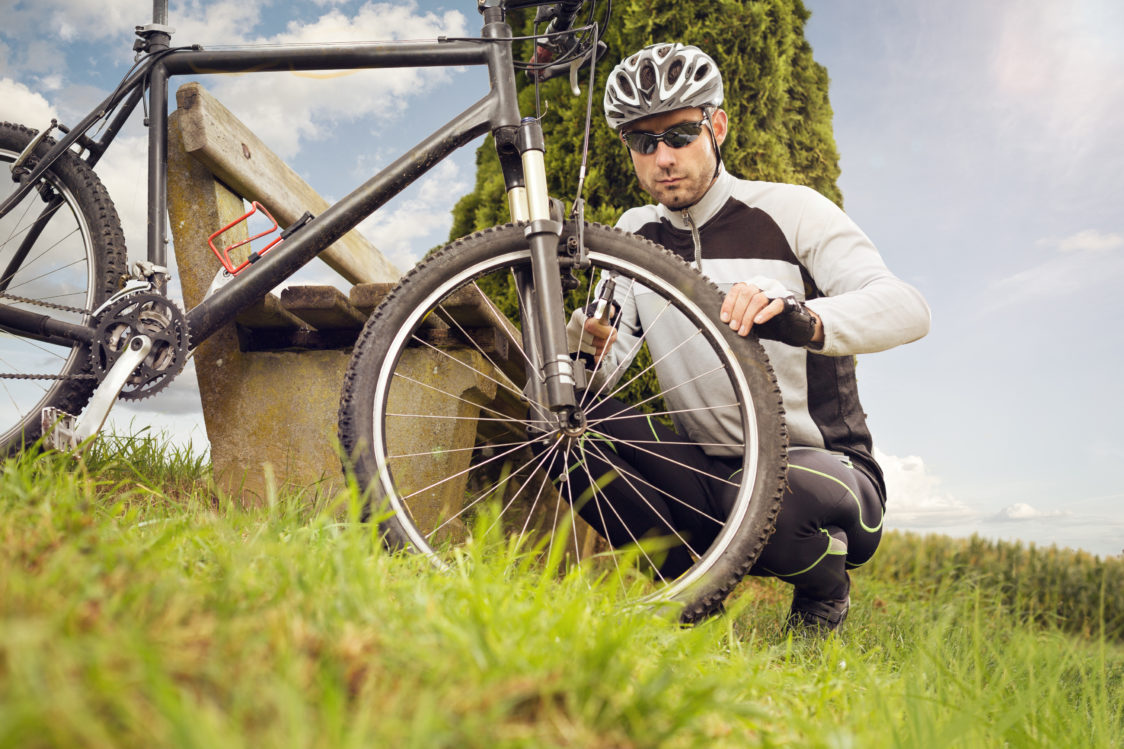
3. Have enough food and drinks with you
Enough energy is necessary to enable you to perform at maximum performance when cycling. If you don’t give the body quality food and drink, it won’t function properly and the fun trip will become a misery. Riding at 21 km/h, an average 65 kg woman burns approximately 520 kcal per hour. The average 80 kg man – approximately 640 kcal. That amount of energy could easily be contained in one whole lunch. You can then easily calculate how many calories you burn on a day trip.
The most important thing is to always have enough fluids with you to prevent dehydration. You can drink plain water or ion supply drinks to supplement important electrolytes lost in sweat. When sporting, however, you don’t have to avoid sugary drinks such as 100% juice. These will replenish the energy needed in the form of sugar, which will make it easier to pedal the next few kilometres. [6]
Don’t forget about food. A high-quality snack and balanced lunch will also help you to complete your planned cycle trip and not end up exhausted down the hill. So pack fruit, protein cookies, energy gels or even flapjacks in your backpack. However, you can also take larger snacks with you to replace lunch. A great choice is a filled sandwich, pasta salad, or couscous with vegetables and meat. If you are interested in more information about how to eat during challenging cycling trips, don’t miss the article What Food To Eat and Drink for Enough Energy While Hiking or Cycling?
You might be interested in these products:
4. Pack a spare layer of clothing
Just because it’s 23 degrees outside, and you normally wear a T-shirt and shorts, doesn’t mean these layers will be enough on your bike. Think of it as different if you’re standing on a hot housing estate where the sun is shining, or riding through a cold forest in the shade. The wind also affects the temperature you feel, and if you’re whizzing down the hill at 60 km/h, you can easily catch a chill. If it’s 30 degrees outside and you know you don’t have a long route ahead of you, shorts and a short sleeve will do.
For longer trips, it is definitely appropriate to have an extra layer. An easily packed windbreaker that doesn’t blow through can work perfectly. However, various types of hand and foot covers are also very popular among cyclists and are easy to wear when the weather changes. Their advantage is that they take up virtually no space. You simply put them in the back pocket of your jersey and you won’t even know you’re carrying anything extra. You can also put them in a small cycling bag. If you generally have a problem with being cold in the feet, I can only recommend shoe covers that don’t blow through and maintain warmth.
Also, think about working up a sweat. It is therefore a good idea to take a spare base layer for longer cycle trips, which you can replace with a dry one so that you don’t get cold when it gets colder. Try to always select functional materials that will remove sweat and keep you dry. Equally, think about when riding on a slight incline forward on your bike. The top (jersey or T-shirt) should thus have an extended length and ideally a silicone bottom hem, so that it does not roll up and you get cold on your back during the ride.
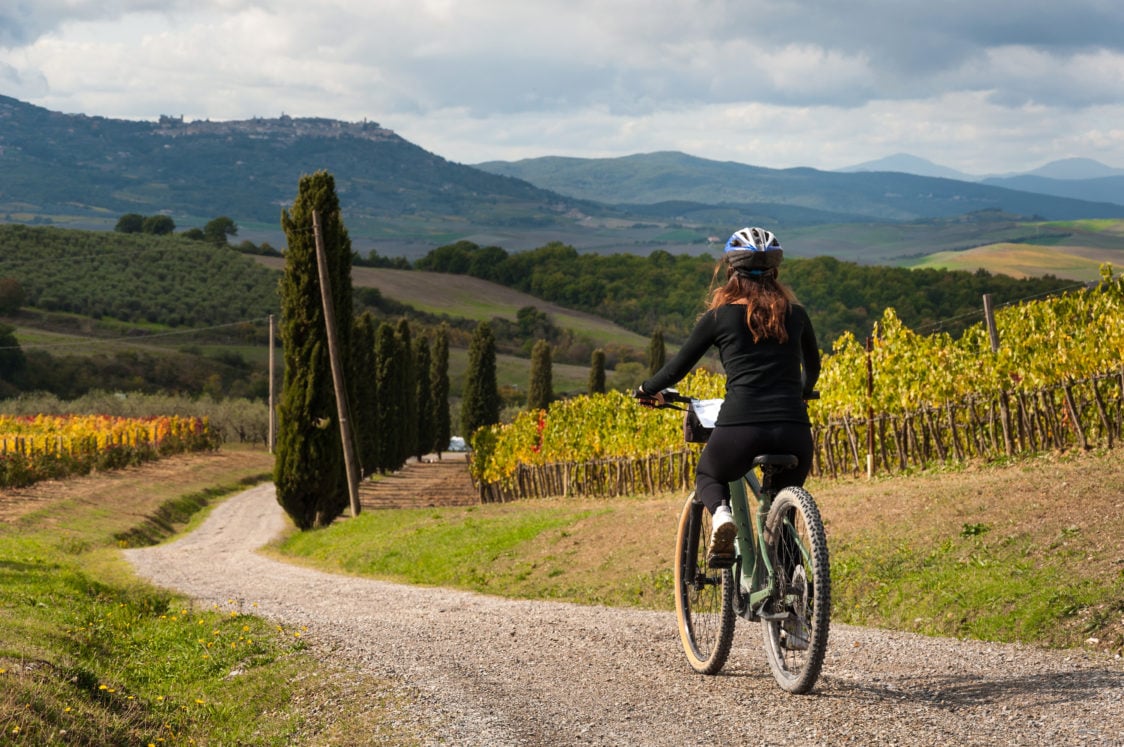
5. Think about safety equipment
Every cyclist should do their best to be as safe as possible while riding. The most obvious, which we hardly need to mention any more, should be a helmet. Each country has specific rules for its wear, which must be taken into account. In most European countries, for example, the wearing of a helmet is mandatory for children under the age of 18. [7]
If you don’t wear a helmet, you might be persuaded to by the following data. Some 25,000 cyclists died on European roads between 2004 and 2013. Around half of the deaths are caused by a collision between a cyclist and a car. There is even a study that compares the risk of cycling and being in a car. The likelihood of serious injury when riding is 23 times higher for cyclists than for car drivers. To some extent, the risk is also associated with the fact that the bike takes longer to cover the distance, and so the cyclist is exposed to danger for a longer period of time. Still, the benefits of cycling outweigh the potential negatives. This is a great way to promote your health. The WHO (World Health Organisation) even estimates that if you cycle for more than 100 minutes a week, the likelihood of death decreases by 10% for every given year. Therefore, don’t avoid cycling, just do your best to minimize the potential risks. [2]
Basic equipment also includes cycling glasses to protect you from the sun. These also prevent wind, insects, dust, or other impurities from getting into your eyes unnecessarily. Nor should you underestimate reflective elements on your clothes and bike lights. Even if you’re out for a ride in the afternoon and you’re convinced you’ll be back soon, you never know what might happen. You can easily get lost or pop a tyre and it will take you some time to repair it. Before you know it, it’s getting dark and you’re on the road without being seen. The front (white) and rear (red) lights should thus be the absolute minimum with which you should not leave home without.
In case you are going out on a bike with smaller children, you can also equip them with reflective vests in addition to the safety equipment mentioned. Reflective elements are visible up to 300 metres in dim lighting, and can be more so for the higher quality elements. By all means spare no expense when it comes to safety, and purchase the smallest of cyclists a high-quality vest in which drivers and passers-by can see them. [1]
Particularly when driving through the city or on bike paths, you should never forget to include a bell in your kit to help with a smooth ride. There are now also so-called invisible bells available, which are practically invisible on your bike. You don’t have to worry, therefore, that it would not suit your bike.
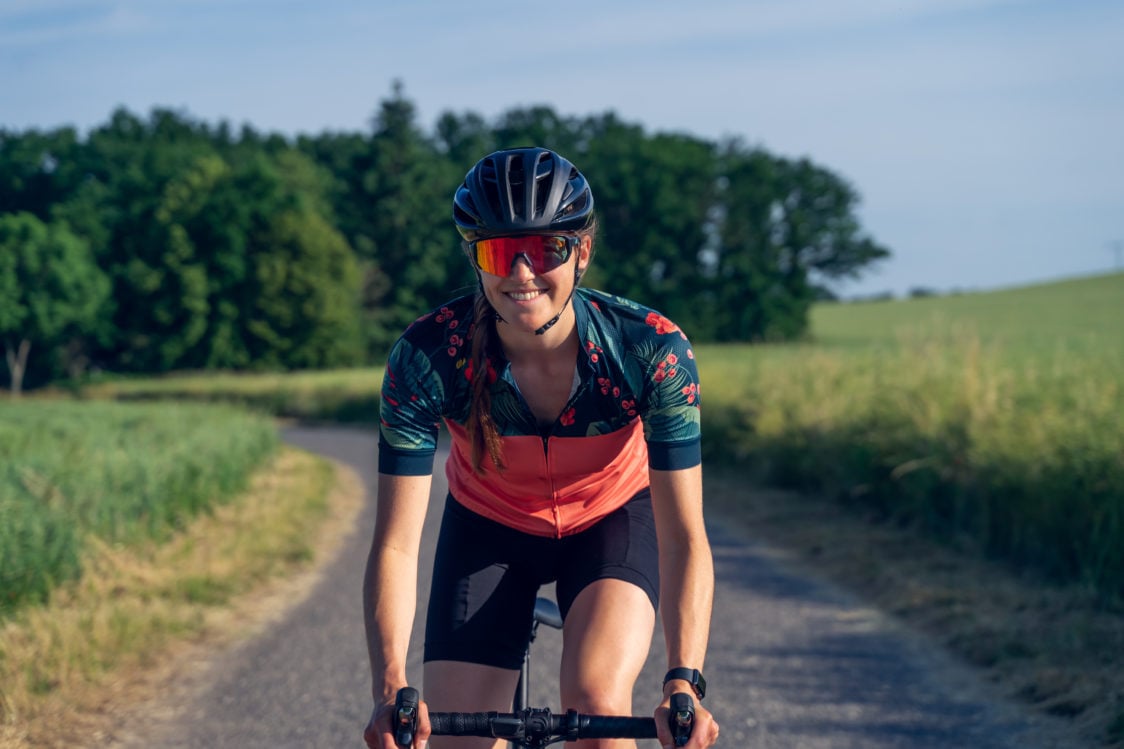
6. Choose a route based on your abilities
Just because your friends can normally travel tens of kilometres without getting significantly tired doesn’t mean you can. Before you cycle, make an objective assessment of your physical condition. Start with lighter routes and gradually increase the distance and add hills. Think also that sitting on a bike is not the same as sitting on a couch at home. At least on the first couple of rides, you’ll probably have a lot of pain in your buttocks. That, too, is why you shouldn’t overdo it in the beginning.
Particularly when you go to unfamiliar areas, take your phone with a map and GPS. Getting lost in the woods is easier than you think. You will probably have difficulty describing to your saviours that you can be found at the third oak tree next to the anthill. In case of an accident, it is also a good idea to have an app installed on your phone that automatically sends your coordinates to rescue workers so that help can reach you as quickly as possible.
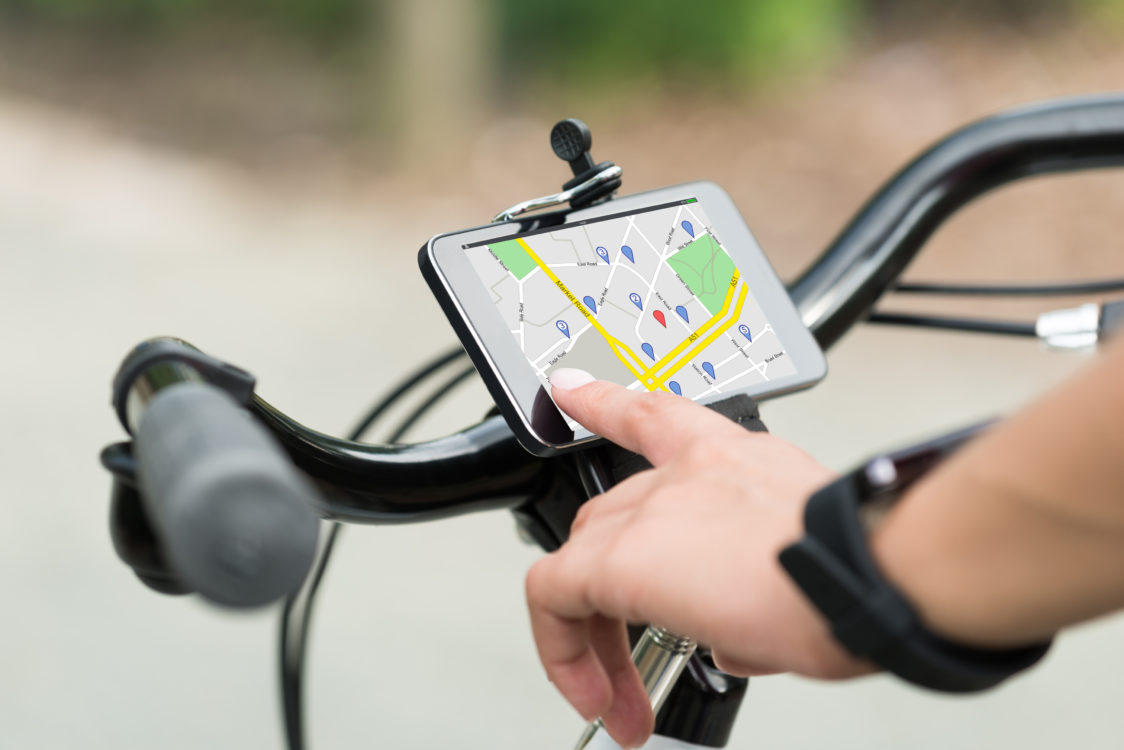
7. Choose a suitable terrain
Have you chosen a track with a bike park along the way? It would be a shame not to visit it, unless you’re riding on a road. In that case, you’d better steer clear of it with a wide berth. In addition to destroying your bike, you are more likely to hurt yourself. Every type of bike has its specifics and terrain to which it belongs.
Amongst the most known types of bikes we include:
- Road bike – lighter bike, adapted to roads to have the least resistance. It is not sprung and has lower stability due to narrower tires. It is therefore not suitable for unpaved surfaces.
- Mountain bike – there are many types of mountain bikes, such as XC, trail or all mountain. They have wider tires and are generally sprung. It is therefore suitable for unpaved surfaces.
- Trekking bike – the frame resembles a mountain bike, the bikes are the same size as a road bike with the difference that they have wider tires. They’re often sprung. This is a more comfortable touring bike that is suitable for longer treks even on unpaved surfaces.
- Gravel – a type of bike that has recently become increasingly popular. It looks like a road bike in appearance, except that it has a tougher frame and rims. The wheels have a pattern and so are more stable than a road bike. You can ride it without any problem through the forest and on dirt roads or gravel.
- Folding bike – city bike, ideal for commuting to work. It can be folded and easily carried. Therefore, it is also suitable for vacations exploring the environment around you.
- Electric bike – a bike with an engine that can make it easier for a cyclist to pedal. It is particularly ideal for older people or as a rehabilitation aid. It is particularly popular among those who do not have an adequate physical condition and still want to try a longer trip in challenging terrain. When you go riding a bike together in a group with different physiques, the less able can go electric and then all can enjoy the trip, unless their battery goes flat. [8]
When you’re thinking about purchasing a bike, think about how you’d like to use it and choose the right type accordingly. There is no point in riding hard on the roads on a mountain bike, just as you should not go on an unpaved forest road with a road bike.
What should you remember?
As you can see, it’s not enough to just get on your bike and get going. Even on short trips, there are many risks you should be prepared for. If you follow our advice, you’ll have the equipment to fix the most common problems. In addition, you will minimize any inconvenience you face. This way, you will not overestimate your ability, you will choose the right terrain, you will have enough energy in the form of a high-quality diet, and the safety equipment will make you visible to those around you. Cycling is a wonderful sport and it would be a shame to ruin your ride because of situations you can avoid.
If you have aspiring cyclists among your friends, be sure to share this article with them so that they would know how to prepare and what to look out for.
[1] Nekupujte reflexní vesty na tržnici, varují odborníci. Některé nejsou ve tmě vidět – https://ct24.ceskatelevize.cz/regiony/2151861-nekupujte-reflexni-vesty-na-trznici-varuji-odbornici-nektere-nejsou-ve-tme-videt
[2] THE EUROPEAN UNION’S ROLE IN PROMOTING THE SAFETY OF CYCLING – https://ec.europa.eu/transport/sites/default/files/cycling-guidance/etsc_the-eus-role-in-promoting-the-safety-of-cycling.pdf
[3] Use This Guide to Tubeless Tires to Make a Switch – https://www.bicycling.com/skills-tips/a27628336/tubeless-tires-guide/
[4] 10 Tools Every Cyclist Should Own – https://blog.mapmyrun.com/10-tools-every-cyclist/
[5] The 13 Best Multi-Tools for Every Kind of Rider – https://www.bicycling.com/bikes-gear/a26222598/best-multi-tools/
[6] Barry M. Popkin et al. – Water, Hydration and Health – https://www.ncbi.nlm.nih.gov/pmc/articles/PMC2908954/#R1
[7] Traffic rules and regulations for cyclists and their vehicles – https://ec.europa.eu/transport/road_safety/specialist/knowledge/pedestrians/special_regulations_for_pedestrians_and_cyclists/traffic_rules_and_regulations_for_cyclists_and_their_vehicles_en
[8] Types of Bikes – https://www.bicycle-guider.com/bike-articles/bike-types/

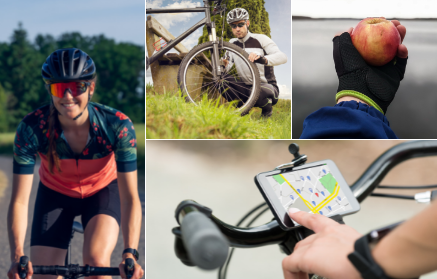
Add a comment